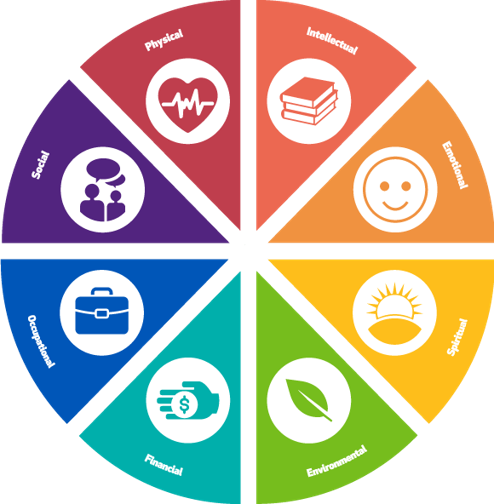How Holistic Wellness Programs Help Employees Bring Their Best Self to Work
January 3, 2023
Holistic wellness isn’t just physical health. An employee’s wellbeing is best when all aspects of health are in balance.
Holistic wellness isn’t just physical health. An employee’s wellbeing is best when all aspects of health are in balance.

When your employees come to work, they don’t check their personal life at the door. Whether it’s family issues, illness or financial struggles, their concerns go to work with them. That’s why companies are launching holistic wellness programs to address the whole employee.
Holistic wellness isn’t just physical health. It includes mental and spiritual health too. And they’re interconnected. A person’s wellbeing is enhanced when all aspects of health are in balance.
A 2022 study by MetLife showed that holistically healthy employees are 74% more likely to be satisfied with their jobs. This compares to a Gallup study that found less than half of American workers are happy in their jobs.
Other findings show that holistically healthy employees are:
The views on what makes up holistic wellness vary, but most people agree that good physical, mental and spiritual health play key roles. The National Wellness Institute adds intellectual, occupational and social health to the mix. (See Wellness Wheel below.}
So how do you address all these areas at work? Here are few ideas.
Physical health: Make exercise easier for employees. Most corporate wellness programs already offer fitness benefits, like onsite gyms or gym reimbursements. Food also contributes to physical health. Does your company have a “regular” vending machine with carbs and candy? Think about offering employees healthier snack options, which will energize them without the crash.
Mental/Emotional health: Establish an employee assistance program (EAP). If you already have a program, assess its effectiveness. Are the number of sessions through your EAP enough for the current climate? Can sessions be virtual or over the phone? These are all questions to ask yourself.
Spiritual health: Provide a quiet space at work for meditation and reflection. This can be as spiritually religious or broad as your company wants. The goal is to help employees develop their purpose, sense of direction and meaning in life. Do employees feel the company is meeting this need? Do employees believe they are contributing to the company’s purpose or mission?
Occupational health: Apply ergonomics to prevent work-related injury or illness. Provide standing desks, flexible seating options or walking/biking desks. You can also encourage healthy practices, such as walking meetings or “short breaks” for a brisk walk.
Intellectual health: Provide opportunities for employees to be creative within the workspace. Foster innovative and out-of-the-box thinking in the workplace. And find ways to expand expertise and skills, such as leadership training.
Social health: Ideas for social health can be endless. You can sponsor friendly, interoffice competitions such as chili cook-offs. Provide opportunities for employees to recognize colleagues who’ve helped them at work. Also encourage employees to participate in corporate challenges or group-sponsored team events. And celebrate meeting goals and record-breaking occasions. Finally, create a culture where employees feel comfortable being themselves; your DE&I efforts (diversity, inclusion, equity) are a good place to start.
Financial health: Ensure your employees have access to valuable resources for informed financial decisions. Recommend financial classes, like those by Dave Ramsey, to help them manage resources effectively and live within their means. Set realistic short and long-term financial goals, including necessary expenses and emergency funds. Remember, everyone’s financial values, needs and circumstances are unique.
Environmental health: Understanding how your social, natural, and built environments impact your health and well-being is crucial. It entails demonstrating a steadfast commitment to a healthy planet and the surrounding environment. Examples of this commitment could include organizing a campus clean-up day or implementing recycling initiatives within your company.

If you don’t have a holistic wellness program, here’s how you can create one.
Now’s a good time to evaluate how well you’re supporting employees’ overall health. Top talent, especially Gen Z, expect employers to recognize their lives inside work and out. With a multi-faceted approach to wellness, you’ll help your employees succeed and bring their best self to work.